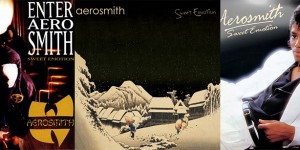 Music
Music
7 facts that prove classic rock ain't what it used to be
by Mark Teo
July 8, 2014
Of all the things that make us contemplate our age—like making lists of albums that turn legal drinking age—nothing makes us feel as old as hearing a song of our youth on classic rock radio. But it’s happening: as ’90s babies have surely noted, classic rock radio plays Green Day, Nirvana, and the Offspring, and it’s likely that the hits of the early aughts are on deck.
This, of course, tells us that the genre is changing: Sure, we associate it with Zep, Floyd, and Boston, but as newer generations begin to grey out, they’re welcoming new names to classic-rock ranks. It’s for the best, really.
But how much, exactly, is classic rock really changing? FiveThirtyEight gathered data from 25 classic rock stations from 30 major metropolises—none of them Canadian, we should add—and came to some startling conclusions. After compiling nearly 40,000 plays, more than 2,000 songs, and 475 artists (a shockingly low amount, if you think about it), here’s what they found.
Classic rock hits change by location
On average, classic rock stations have their preferences based on location. Creedence Clearwater were played disproportionately in Arizona, but some cities had surprisingly progressive tastes: In San Fran, Nirvana was favoured. R.E.M. was played most disproportionately in Washington D.C. And St. Louis, for their part, raged on with Metallica. Here’s a breakdown of FiveThirtyEight’s city-specific findings.
The ’90s are creeping into the classic canon
Using date from Songfacts, FiveThirtyEight found that songs from the ’90s, ’00s, and even the ’10s—which will surely spike when Pink Floyd cut a new album—are creeping into rotation. The numbers are miniscule (songs from the early ’90s peak out at around 1 per cent of all plays), especially compared to the ’70s (the early ’70s had roughly 7 per cent), but it’s logical to think that, as Pearl Jam fans get greyer, these numbers will balance out.
More than half of classic rock comes from a single decade
The early ’70s until the early ’80s—not the ’60s, surprisingly—was the richest era for classic rock, and a 10-year span from 1973 to 1982 makes up nearly 60 per cent of all classic-rock hits. No surprise, really: It’s when Zeppelin, Floyd, Heart, and the Allman Brothers were all at their peak. In the video above, try counting how many songs hail from this period; hint, it’s a lot.
The most-played classic rock song was released in 1973
Of the data compiled, what was the most-played song? If you guessed “Dream On,” you were bang on. Think Steven Tyler can remember its lyrics?
Classic rock has an elite
To prove it? Five per cent of bands on classic-rock radio account for more than half of all the plays. No shock, really—Aerosmith has two songs in the top 10, as do Boston and ZZ Top. Check the top 30 most-played songs here.
Led Zeppelin is the most-played classic rock band in the U.S., and probably the world
While Aerosmith had the most-played single on classic-rock radio, Led Zeppelin was the most-played band. And where were they played the most? New York City. If we’re interpreting the chart above correctly, we can also assume that Denver and Tampa Bay have relatively traditional tastes—they had the most plays of powerhouses like Van Halen, AC/DC, and more.
The South loves their hard rock
We’re starting to learn even surprising facts about regional tastes, starting with the South. While we’d guess that CCR and Lynyrd Skynyrd would dominate playlists south of the Mason-Dixon, it’s not true—Southern cities seemed to dig hard rock, including Motley Crue (above), Kiss, Metallica, and REO Speedwagon. More predictably, though, the West—California in particular—dug grunge like Nirvana and Pearl Jam, while midwestern cities loved heartland rock (even by non-heartland performers, like Bruce Springsteen and Bryan Adams).
Tags: Music, Lists, News, Aerosmith, classic rock, Led Zeppelin










